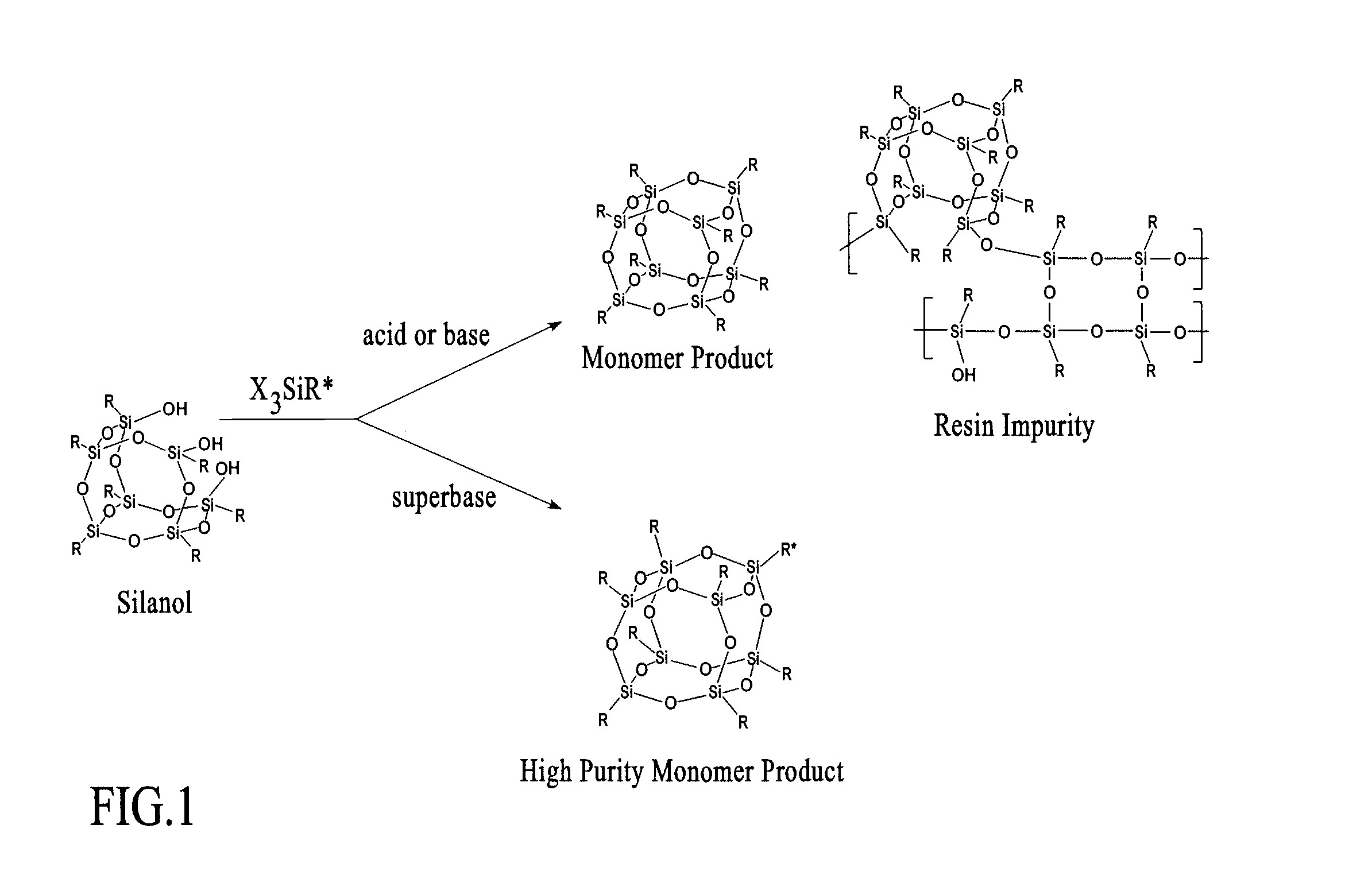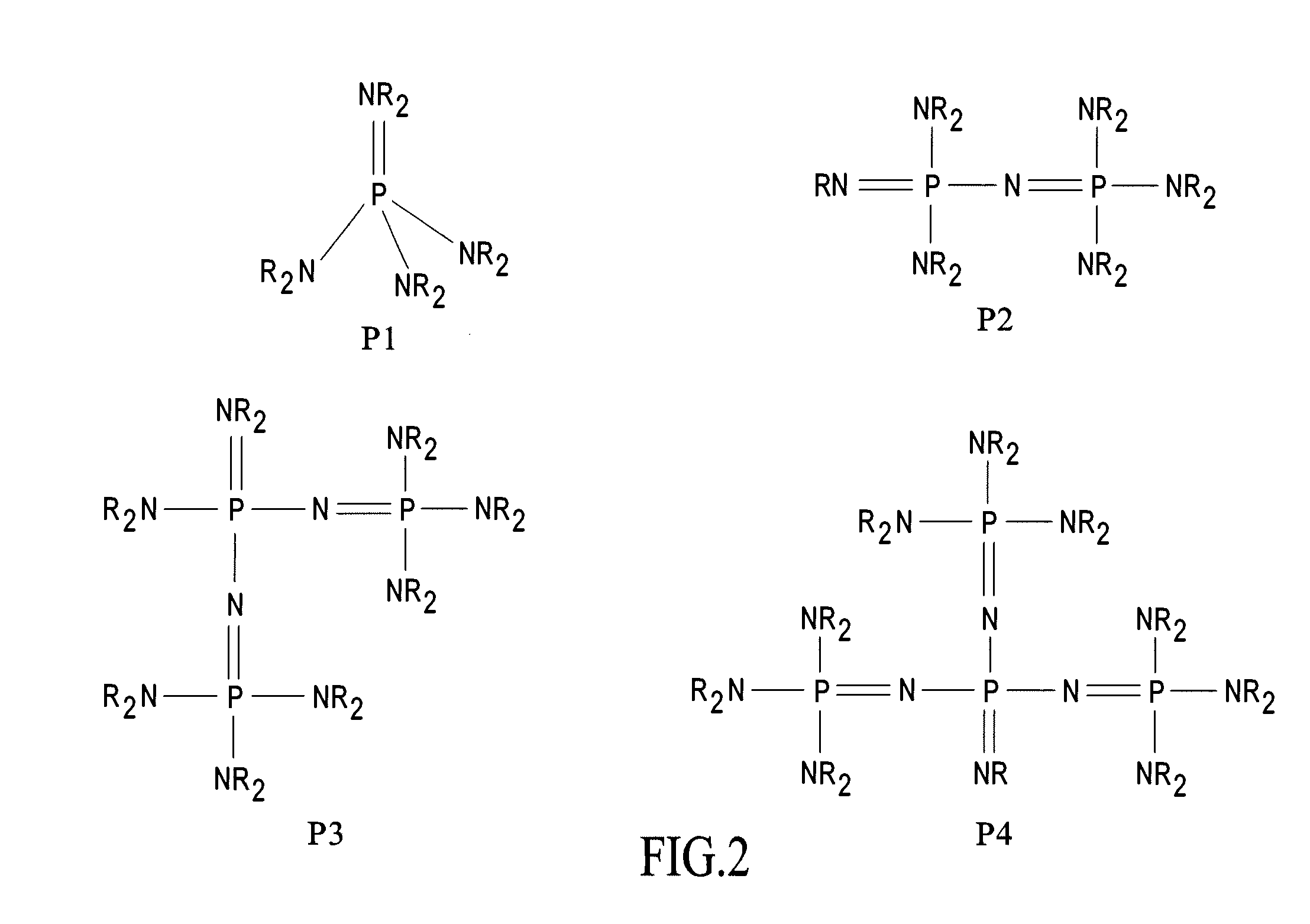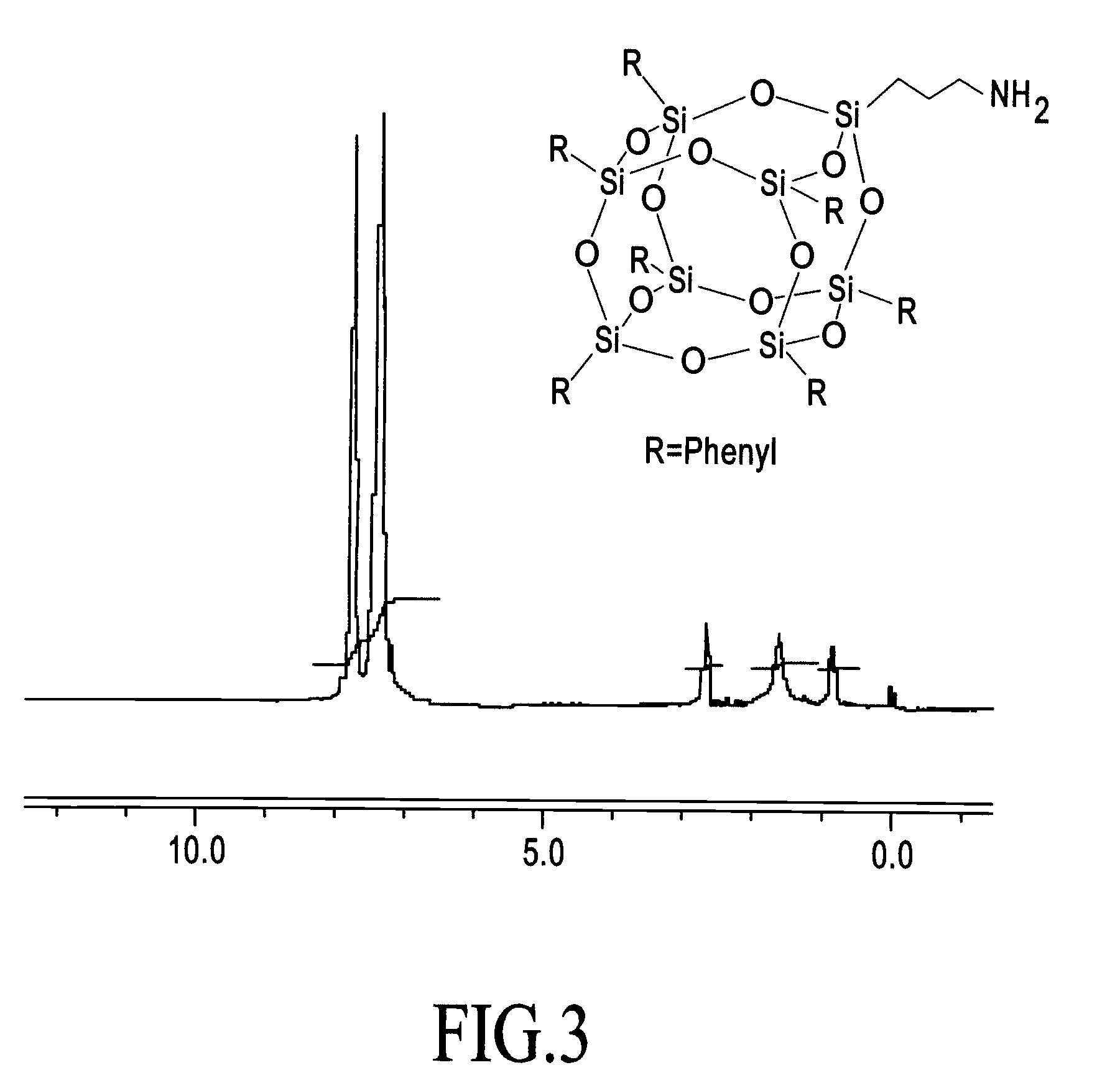Process for assembly of POSS monomers
a monomer and assembly technology, applied in chemical apparatus and processes, organic chemistry, silicon organic compounds, etc., can solve the problems of unsuitable resins in microelectronics, biological or medical applications, etc., and achieve low resin content, stable and stable production, and high yield
- Summary
- Abstract
- Description
- Claims
- Application Information
AI Technical Summary
Benefits of technology
Problems solved by technology
Method used
Image
Examples
example 1
Synthesis of [(isobutylSiO1.5)7(methacrylpropylSiO1.0)1]Σ8
[0019] [(isobutylSiO1.5)4(isobutyl(OH)SiO1.0)3]Σ7 (688 g, 0.87 mole) was dissolved in THF followed by addition of methacrylpropyltrimethoxysilane (204 g, 0.87 mole) and the solution was cooled to 5° C. Phosphazene superbase (FW 234.32, 15.72 mmol) was then added and the mixture stirred at room temperature for 3 days. The solution was then quenched with acetic acid (1.5 g). Then 1 liter of methanol was added and the mixture was stirred and filtered. The solid was dried to render pure white product in 75% yield.
example 2
Synthesis of [(EtSiO1.5)7(glycidalSiO1.0)1]Σ8
[0020] [(EtSiO1.5)4(Et(OH)SiO1.0)3]Σ7 (50 g, 84 mmole) was dissolved in methanol followed by addition of 3-glycidoxypropyltrimethoxysilane (19.86 g, 84 mmole) and the solution was cooled to 5° C. Phosphazene superbase (FW 234.32, 15.72 mmol) was then added and the mixture stirred for 3 days at 5° C. The solution was then quenched with acetic acid (87 mg) filtered, and volatiles removed and dried to render a solid. The solid washed with methanol (1400 ml) and dried to render 415 g of pure white product in 87% yield.
example 3
Synthesis of [(EtSiO1.5)7(ethylnorborneneSiO1.0)1]Σ8
[0021] [(EtSiO 0.5)4(Et(OH)SiO1.0)3]Σ7 (12 g, 20 mmole) was dissolved in methanol followed by addition of exo-norbornenylethyltrimethoxysilane (4.84 g, 20 mmole) and the solution was cooled to 5° C. Phosphazene superbase was then added and the mixture stirred for 2 days at 5° C. The solution was then quenched with acetic acid (87 mg) filtered, and volatiles removed, washed with additional methanol and dried to render a white product.
PUM
 Login to View More
Login to View More Abstract
Description
Claims
Application Information
 Login to View More
Login to View More - R&D
- Intellectual Property
- Life Sciences
- Materials
- Tech Scout
- Unparalleled Data Quality
- Higher Quality Content
- 60% Fewer Hallucinations
Browse by: Latest US Patents, China's latest patents, Technical Efficacy Thesaurus, Application Domain, Technology Topic, Popular Technical Reports.
© 2025 PatSnap. All rights reserved.Legal|Privacy policy|Modern Slavery Act Transparency Statement|Sitemap|About US| Contact US: help@patsnap.com



